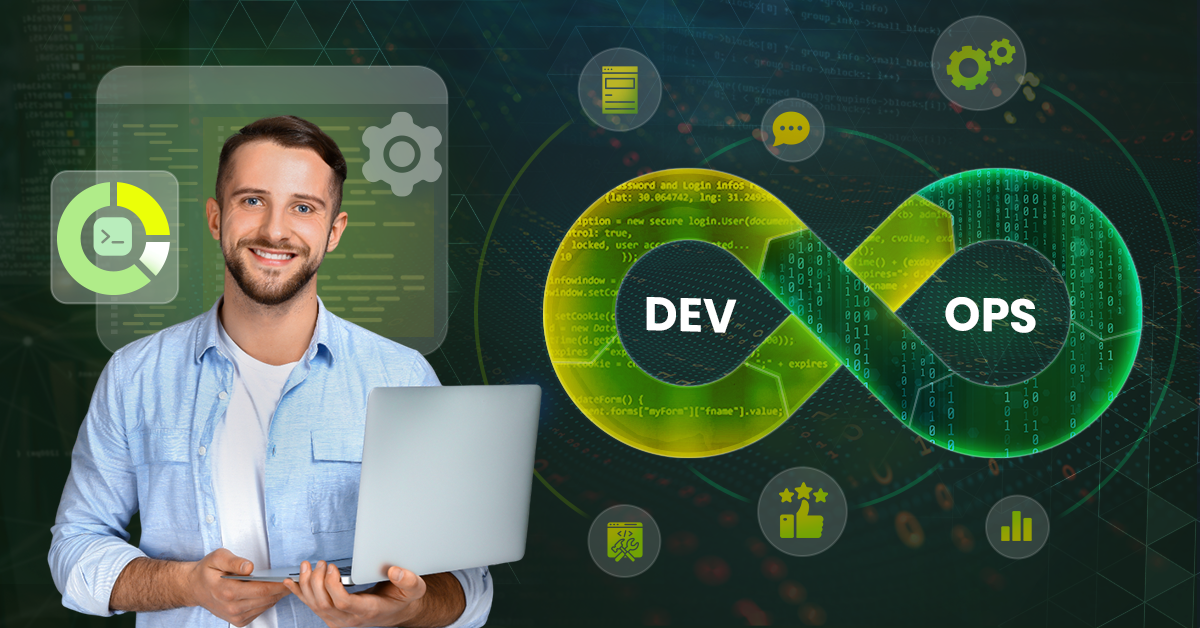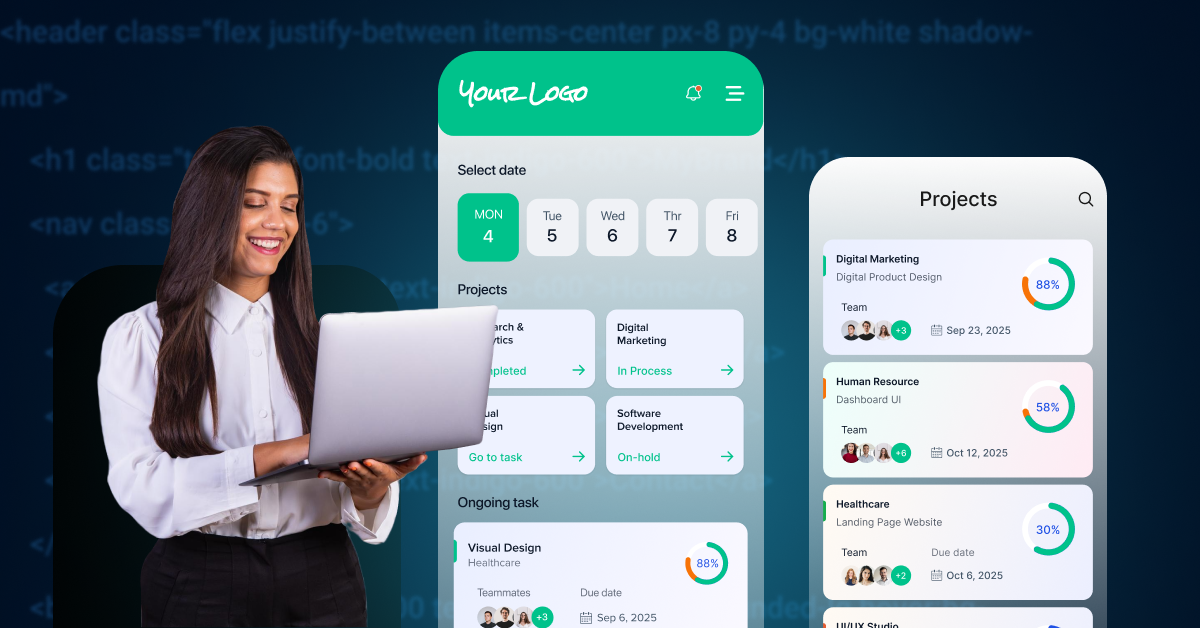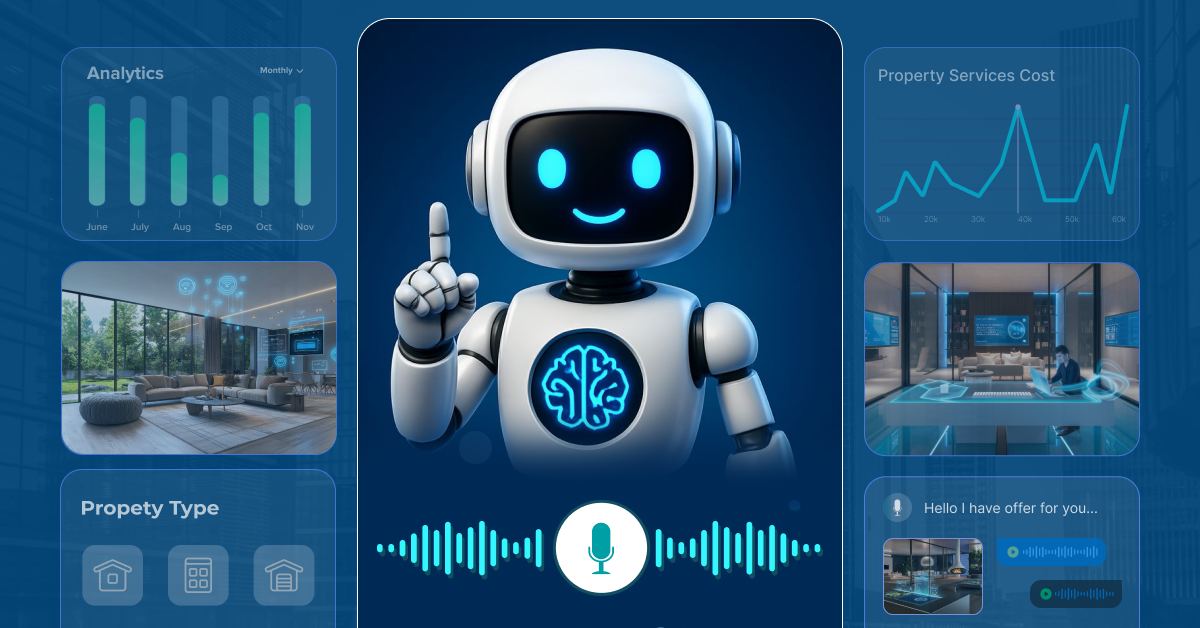Understanding the Software Product Development Life Cycle: A Step-by-Step Guide
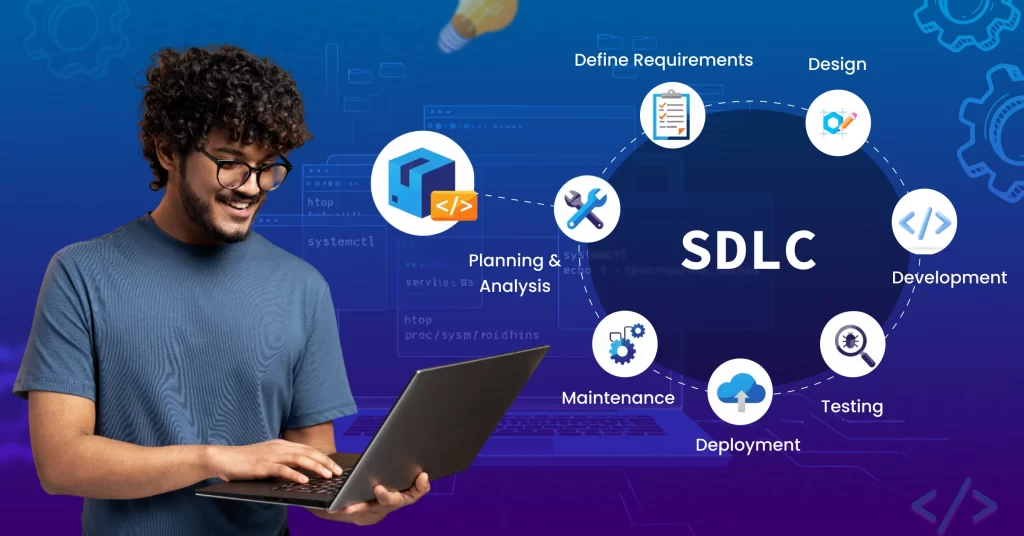
The world moves on software. There is software behind every digital thing you see, hear, and touch. From menial everyday chores to complicated tasks, software has crept into every aspect of our lives.
So, it’s only natural that something as important as software has a rigid, structured approach to development.
And that’s where the software product development life cycle (SDLC) comes in.
But what is the SDLC?
What benefits does it offer that make it a go-to option for building high-performing software?
Is it a one-step process, or are there multiple phases involved?
The sections below answer all these questions. It dives deep into the core concepts of the SDLC, explaining the reasons why development teams prefer them. Read on!
Key Takeaways
- 7 Stages: The 7 software product development life cycle stages include planning and analysis, requirement definition, design, development, testing, deployment, and maintenance.
- Numerous Benefits: The SDLC reduces software product development costs, improves process times, and optimizes workflows.
- Creating a Product Plan: A product plan defines your software’s vision and creates a roadmap.
- Structured Process: As the SDLC is a structured process, issues are isolated and dealt with as development progresses.
- Adaptable to Chosen Approach: The SDLC is compatible with different types of development approaches.
Table of Contents
What is Software Product Development?

Software product development is the process of building and improving a software product. It includes everything, from the initial ideation phase up until launching the product and providing regular updates and maintenance.
The software development process can be initiated for numerous reasons. You can choose to improve an existing product by integrating modern tech like AI or IoT.
Or you can create a new software product from scratch, specifically customized to address the pain points of the target audience.
The software product development process runs in cycles, allowing the product to improve with each iteration.
Now let’s take a look at the 7 stages of software product development.
Stages of the Software Product Development Life Cycle
The SDLC is a cost-efficient and time-saving process that guides development teams to build high-quality software. The software product development life cycle involves several key stages, including planning and analysis, defining requirements, design, development, testing, deployment, and maintenance. The sections below discuss each of these stages in detail.
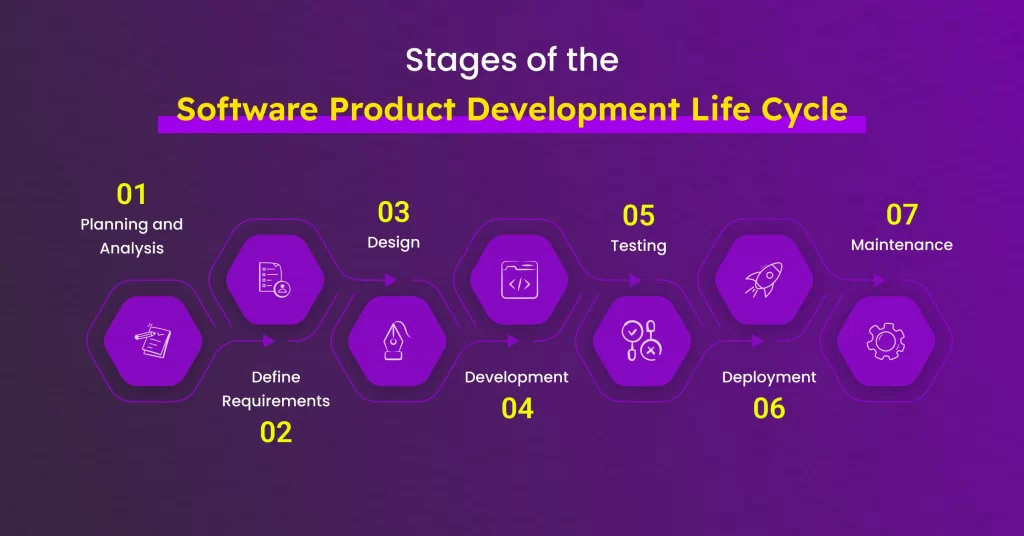
1️⃣ Planning & Analysis
A product idea and capital alone won’t be sufficient for a successful software product.
You need data—verifiable, research-backed data that proves your idea has the potential for a market-disrupting software product.
The planning and analysis stage helps in this endeavor. It assists businesses in getting a clear vision of the product, the current status of the market, and their competitors. It also provides useful information on what your USP is going to be, the platforms the software is expected to support, and the potential challenges.
By the end of this stage, you’ll have a clear picture of what you plan to do, why you plan to do it, and how you’re going to do it.
2️⃣ Define Requirements
The requirements for the product are defined through the Software Requirement Specification (SRS). This document holds the functional and non-functional requirements of the software.
Functional requirements refer to the functionalities available to the end user. Non-functional requirements are the technical specifications of the software, like the structure and the dependencies.
Additionally, the scope of the software and the type and number of users the software will have are finalized here.
3️⃣ Design
The design phase of the software product development lifecycle includes creating wireframes and prototypes.
Wireframes, usually done through tools like Figma, Balsamiq, UXPin, and Justinmind, are skeletal, low-fidelity depictions. They showcase the user interface, and the emphasis is more on structure and functionality.
Prototypes, on the other hand, are high-fidelity, interactive models used to describe user interactions. Prototypes can also include visual elements.
Product managers, developers, and designers often collaborate in this stage, as the next step is development.
4️⃣ Development
Development is the most time-consuming stage in the software product development process.
It utilizes data from the previous stages and leverages specialized development tools, like IDEs, version control systems, project management tools, and build automation tools.
The development process is spread into smaller, manageable chunks and allocated to the team. The front-end and back-end of the software are created in adherence to the finalized specifications and stakeholder requirements.
By the end of the development phase, the software would’ve reached the alpha stage, ready to undergo testing by the internal team. The development phase also has a massive influence on the software development costs.
5️⃣ Testing
The developed software undergoes a series of tests to identify bugs, performance issues, usability, and alignment with user and business objectives.
The testing team combines automated and manual testing strategies to ensure that all modules of the software are working as intended. The software is also tested for vulnerabilities to avoid data loss during cyberattacks.
The techniques executed here include unit testing, functional testing, performance testing, security testing, usability testing, and acceptance testing.
6️⃣ Deployment
The developed software now moves into the production environment, allowing the target market (or early adopters, if it’s an MVP) to use it.
Based on the methodology used, the deployed software can either be a complete product (Waterfall methodology) or an improved version of existing software (Agile methodology). Basic projects can be launched in a single go, while complex software is generally launched in phases.
Most software deployments rely on automation tools like Jenkins, Travis CI, or GitLab CI/CD for a smooth process.
7️⃣ Maintenance
The final stage of the software product development process is an iterative one. Development teams regularly monitor the deployed software for performance improvements that they can implement via updates.
During the maintenance process, developers also fix user-reported bugs and release security patches to deal with new threats.
The data gathered in the maintenance stage will be used to enhance the software and add new features as time progresses.
How to Create a Software Product Development Plan
A software product development plan creates a strategy for all the tasks involved in the development process. The ideal product development plan aligns with stakeholders needs and concerns while also meeting end-user objectives.
To create a software product development plan, you must define your product’s vision, draft a product roadmap, and implement it. An efficient product development plan speeds up the entire process while still making sure the product meets market and user objectives.
Here are the 3 steps involved in the creation of a product development plan.
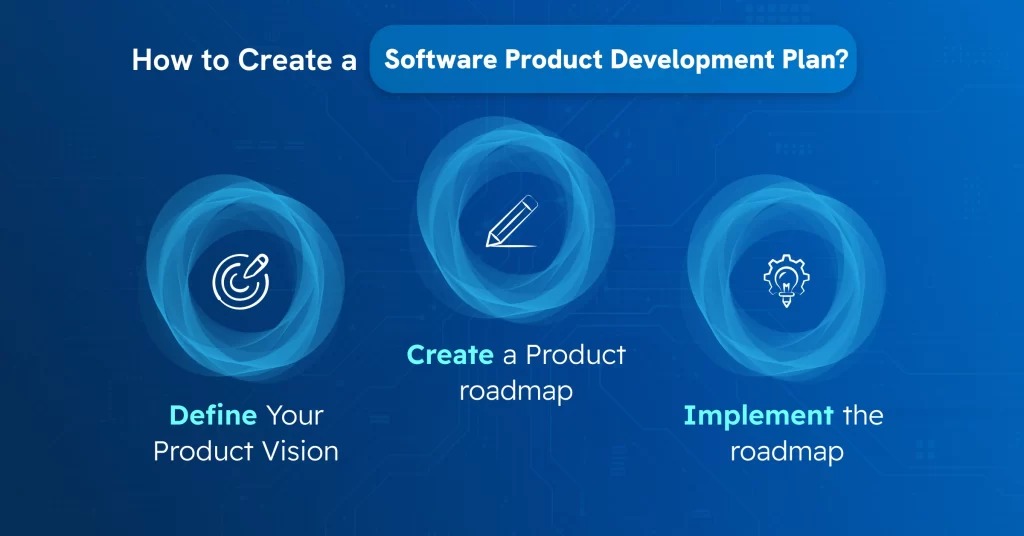
📌 Step 1: Define Your Product Vision
Product vision is defined as the high-level description of the desired future of the product being developed. It outlines the purpose of the product, the target market, and the value it offers to end users.
A clearly defined product vision is critical to the success of the software.
📌 Step 2: Create a Product Roadmap
This high-level visual document showcases the short- and long-term goals of the product. It helps in communicating the product vision and goals to other parties involved, including stakeholders, development teams, executives, and customers.
The project roadmap also includes a timeline, or a timeframe, for product launch and updates.
📌 Step 3: Implement the Roadmap
Once the product vision and roadmap are finalized, the next step is to implement the roadmap.
A well-defined roadmap will help streamline the product development process, optimizing workflows and ensuring all parties involved play their parts in the successful completion of the project.
Implementing the product roadmap is usually done with the help of tools like Asana, Jira, ProductPlan, and Aha!
With that out of the way, let’s discuss some benefits of a clear software product development life cycle.
Benefits of Having a Clear Software Product Development Life Cycle
The major benefits of having a clear software product development life cycle include better stakeholder alignment, predictable delivery and performance, optimized time and resource management, improved product quality, easy product scaling, and enhanced issue tracking.
Each of these benefits is briefly described below.
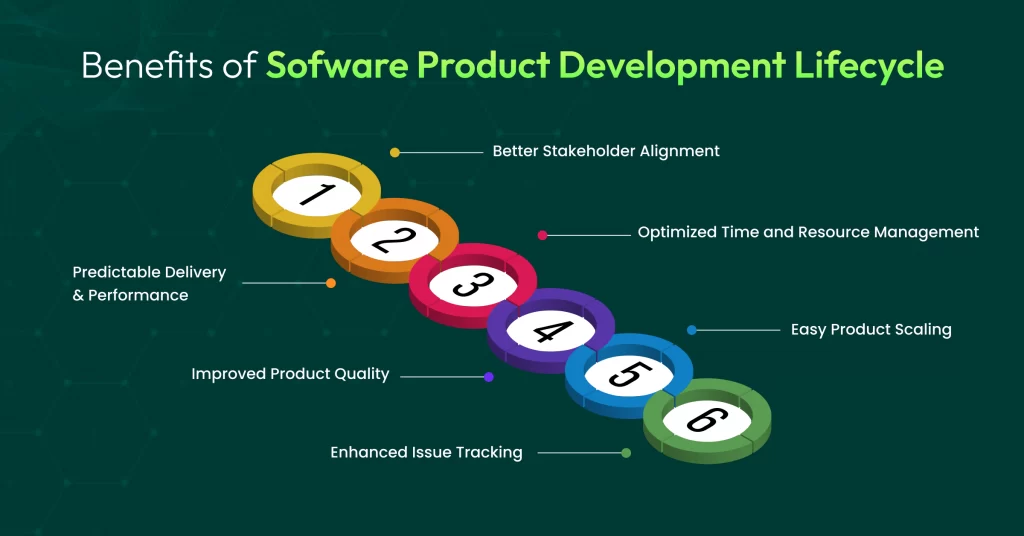
✅ Better Stakeholder Alignment
SDLC promotes transparency between stakeholders, developers, product owners, and end users, leading to fewer misunderstandings and better collaboration.
✅ Predictable Delivery and Performance
It becomes easier to set tasks and milestones and achieve them as the roadmap has already been planned.
✅ Optimized Time and Resource Management
A clear software product development process deals with resource bottlenecks and task allocation efficiently, resulting in faster development times and better resource usage.
✅ Improved Product Quality
A well-defined SDLC structures all stages systematically, ensuring fewer bugs and, ultimately, enhanced product quality.
✅ Easy Product Scaling
Future changes are easier with a well-planned SDLC, as the timelines, tech stacks, and scope of each stage are clearly defined.
✅ Enhanced Issue Tracking
Tracking and addressing issues are faster with a clear SDLC, thanks to the implementation of robust tracking mechanisms that look for discrepancies throughout the process.
Wrapping Up
The software product development life cycle is a seven-step process. Each step plays a critical role in building software that’s scalable, meets user expectations, and generates revenue.
Although the steps might seem easy on paper, complications may arise that will disrupt the process.
To avoid such situations, your best bet would be to partner with an experienced software product development company like CONTUS Tech.
CONTUS Tech comes with close to two decades of experience in developing and enhancing software for all types of businesses, from startups to Fortune 500 companies. Our expertise spans across a range of industries, from automotive, e-commerce, and retail to education, healthcare, banking, and more.
Have a project idea in mind and don’t know where to start? We can help. Schedule a call and find out how we can help your dream project take shape.
Software Product Development Process FAQs
Why is it important to have a product development plan?
It is important to have a product development plan because it creates a roadmap for building successful products that address the customer’s pain points and meet business goals. A product plan guides teams through the entire development process, from ideation to market launch.
How long does the product development process usually take?
The time taken for product development ranges from a few weeks to several years, based on the complexity of the project and the resources available.
Which SDLC model is best for my software project?
The best SDLC model for your software project depends on several factors, including the size of the project, its complexity, the requirements stability, and the expertise of the team. For example, smaller projects with well-defined requirements would benefit from the Waterfall model, while larger projects with evolving requirements will have to follow the Agile or spiral model.
How can AI improve software development in the SDLC?
AI can improve the software development process by automating processes, improving development time, enhancing code quality, reducing costs, boosting productivity, and stage-wise efficiency optimization. The specialists at CONTUS Tech utilize the power of AI to secure CI/CD pipelines, handle feature flag management, and assure continuous resilience, all of which leads to a streamlined process and better software quality.
What is Continuous Delivery, and how does it fit into the SDLC?
Continuous Delivery is an approach in software engineering that focuses on developing software that is ready for release at any stage of the software product development process. It achieves this by automating the build, test, and deployment pipeline.
How do you measure success in the software product life cycle?
Success in the software product life cycle is when the delivered software is of high quality, meets user requirements and business objectives, and goes through a smooth development and maintenance process. The KPIs used to measure success include product adoption, product usage, customer engagement, customer satisfaction, and business impact.


